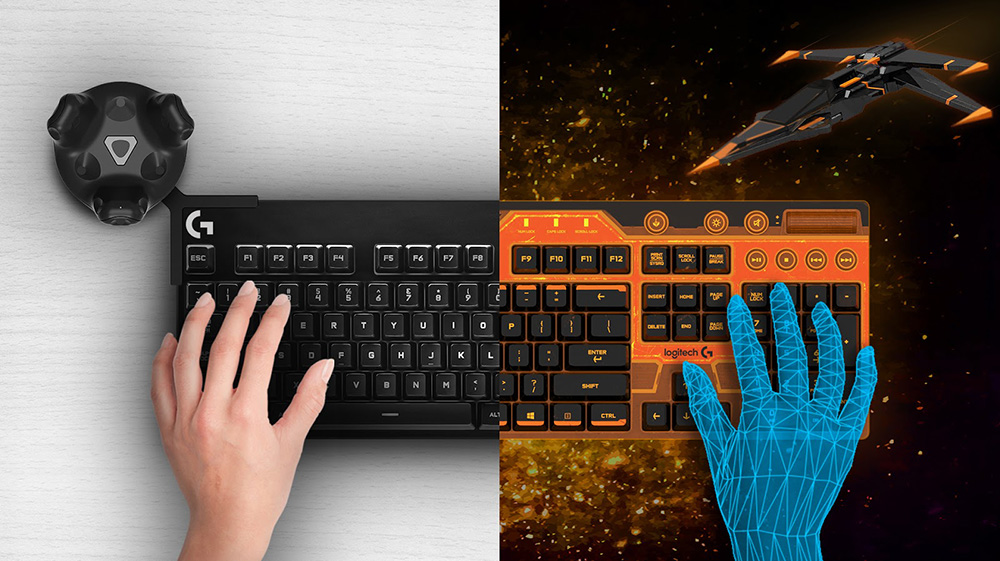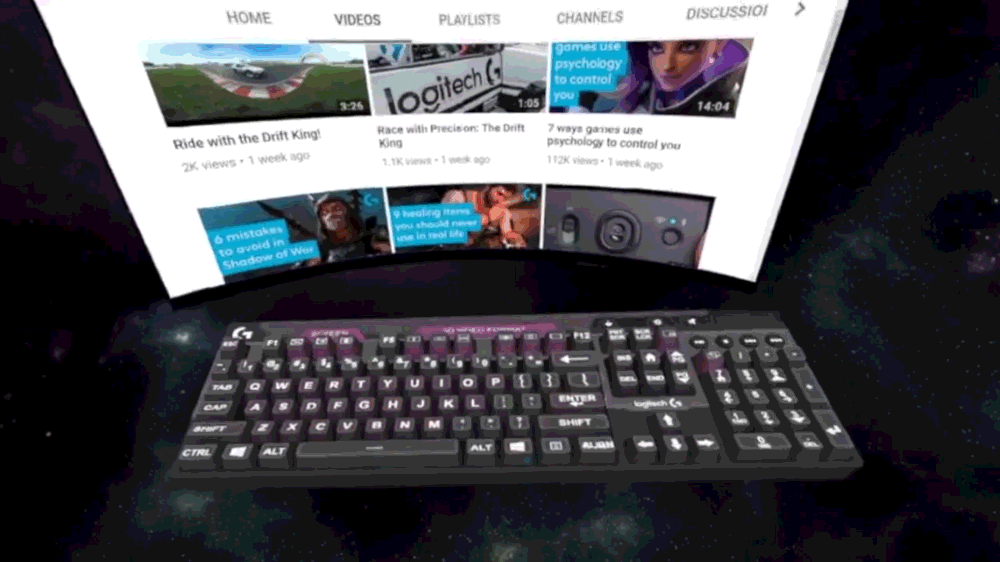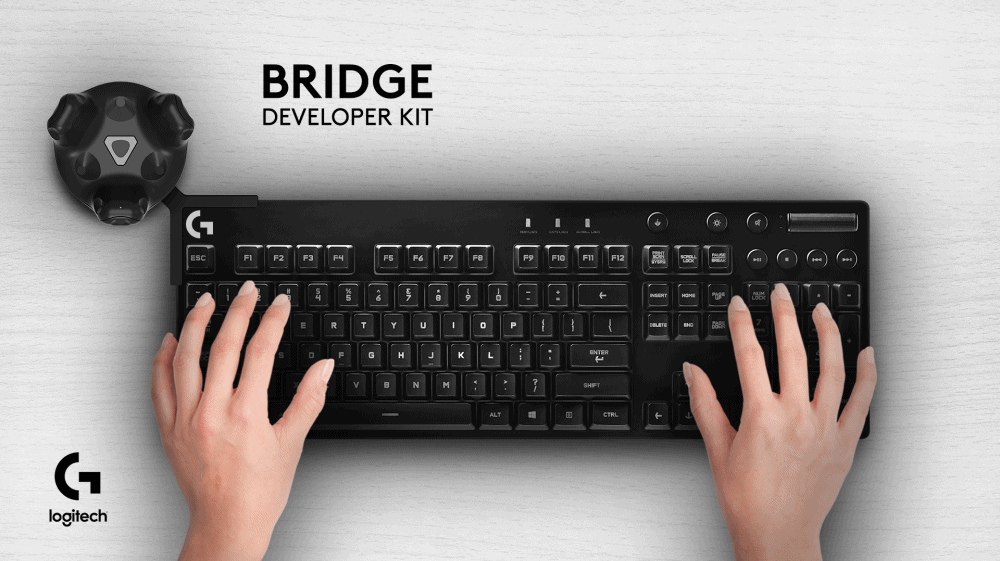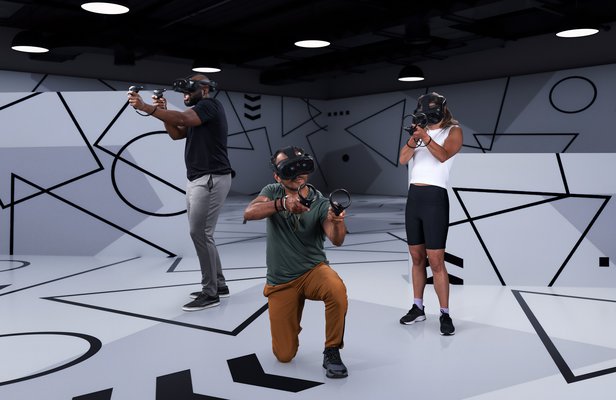Introducing the Logitech BRIDGE SDK

Metaverse
5 minutes read
This is a guest blog post by Vincent Tucker, Director Of Innovations & Strategy at Logitech.

What are we sharing today?
I am excited to introduce the BRIDGE developers kit, an SDK aimed at helping App makers and SW developers solve the problem of text entry in virtual reality.
The kit consists of a Logitech G gaming keyboard, an accessory that positions a Vive Tracker correctly on the keyboard, and the associated software (valued at MSRP U.S. $150). Logitech will be seeding 50 of these kits to select developers with the goal of partnering to create compelling new experiences centered around a VR keyboard.
“Whether you’re doing work or surfing the web you sometimes need the ability to enter text, and Logitech has made it easier to use your keyboard in VR. With Bridge, you can see your physical keyboard, your hands and type without having to take your headset off.”
– Guy Godin, Virtual Desktop
We will be accepting applications from today through November 16, 2017 for the initial 50 slots in our developers program. If there is sufficient interest we may build additional kits for purchase after the initial batch is distributed.
Why Logitech and Virtual Reality?
Logitech has a small team focused on understanding and exploring experiences in the Virtual and Augmented Reality ecosystems, and how Logitech might improve those experiences. As part of that exploration, we’ve worked closely with the HTC Vive team and we are ready to share this Beta Experience with the development community.
Why did we do something like this?
During our initial explorations of VR, we were struck by the fact that keyboard use and text entry were necessary but not natural — and we’ve heard similar complaints from others. Our motivation comes from the research-backed understanding that in certain situations the user still needs a keyboard to interact with applications, particularly in productivity-driven or desktop scenarios, but also in games, social applications and content browsing.
“We’ve been working with Logitech over the past year and think what they’ve created is the solution we all need. Virtual keyboards are great for simple interactivity, but for productivity and collaboration there’s nothing quite like the tactile feel of typing on an actual physical keyboard. Being able to see your keyboard in VR makes it significantly easier to type and interact with our computers.”
– Darshan Shankar, Founder and CEO, Bigscreen, Inc.
We believe that a physical keyboard should be present, as it delivers essential tactile feedback and a universal experience that people value. Whether you are using a keyboard for gaming, communication or productivity, it is an effective and efficient tool. Besides letters, numbers and symbols, keyboards provide a range of modifier keys for more complex actions, all learned, perhaps painfully, and stored in your memory over years of use.
“Enabling the Web is critical to the expansion of VR and having a keyboard is essential to making that happen. That’s why we’re excited about the work Logitech is doing on this front. We are so impressed with what they’ve created and know that it will only get better with time.”
– Diego Marcos, A-Frame API designer from Mozilla

But VR can transform and augment that trusty keyboard – so easy to disregard – into a contextually aware companion for whatever application you use, becoming a palette for your creative workflow, dynamically providing you with any commands and shortcuts you need.
The customization can range from simple to complex. Ever wanted to change the font on your keys? Make the font bigger? Highlight keys that work in a given app, or make the ones that don’t invisible? How about changing the color of your keyboard or keys?
The possibilities are limited only by your imagination.

How did we do it?
We had a challenging problem to solve within the constraints of the existing system. Early on, we worked with some key development partners like Virtual Desktop, BigScreen and Autodesk, among others and surveyed the community to ask about their experiences and built toward this day based on what we’d learned.
“We met with Logitech in August and were really keen to see the latest in VR peripherals because it’s a natural fit for many of our professional customer workflows.”
Joel Pennington, AR and VR strategy and development, Autodesk
The result? We’ve created a way for the HTC Vive Tracker to represent a keyboard across the Steam VR system. It is this software piece that presents the user with an overlaid virtual representation of their keyboard in any VR application, complete with animations when keys are pressed. It’s compatible with all apps that are developed based on SteamVR. The developer’s application does not need to manage anything, the overlay appears automatically as soon as the associated Vive Tracker is turned on. It also affords the opportunity to skin the keyboard in a variety of ways, as mentioned above, allowing developers to create unique experiences for their communities.
Our work didn’t stop there, we know that for a true typing experience you need to see your hands, and we’ve created a way to use the Vive’s existing tracking to do that. We’ve put in a lot of hard work to develop this experience so far and we know it can go much further with the creativity of the developer community.
When do we get started?
We’re accepting applications for participation in the developer program beginning today. Participation is open to developers based in the U.S. and you can find the application here. The submission period ends November 16.
Please be aware that this is a BETA version of this SDK and in this current iteration it is purely a Proof of Concept to spark discussion and feedback from you, the development community. You can expect to see bugs and robustness issues, but we are working continuously to fix them.
I invite you to submit an application for your project and how a system like the one we are offering would enhance your application or the user experience.
I am excited to see where this journey will go!
Vincent Tucker
Director of Innovations and Strategy at Logitech
Developer? Discuss the Logitech Bridge SDK with Logitech staff, on our Community Forums
Logitech will be accepting applications from today through November 16, 2017 for the initial 50 slots in the developers program.


